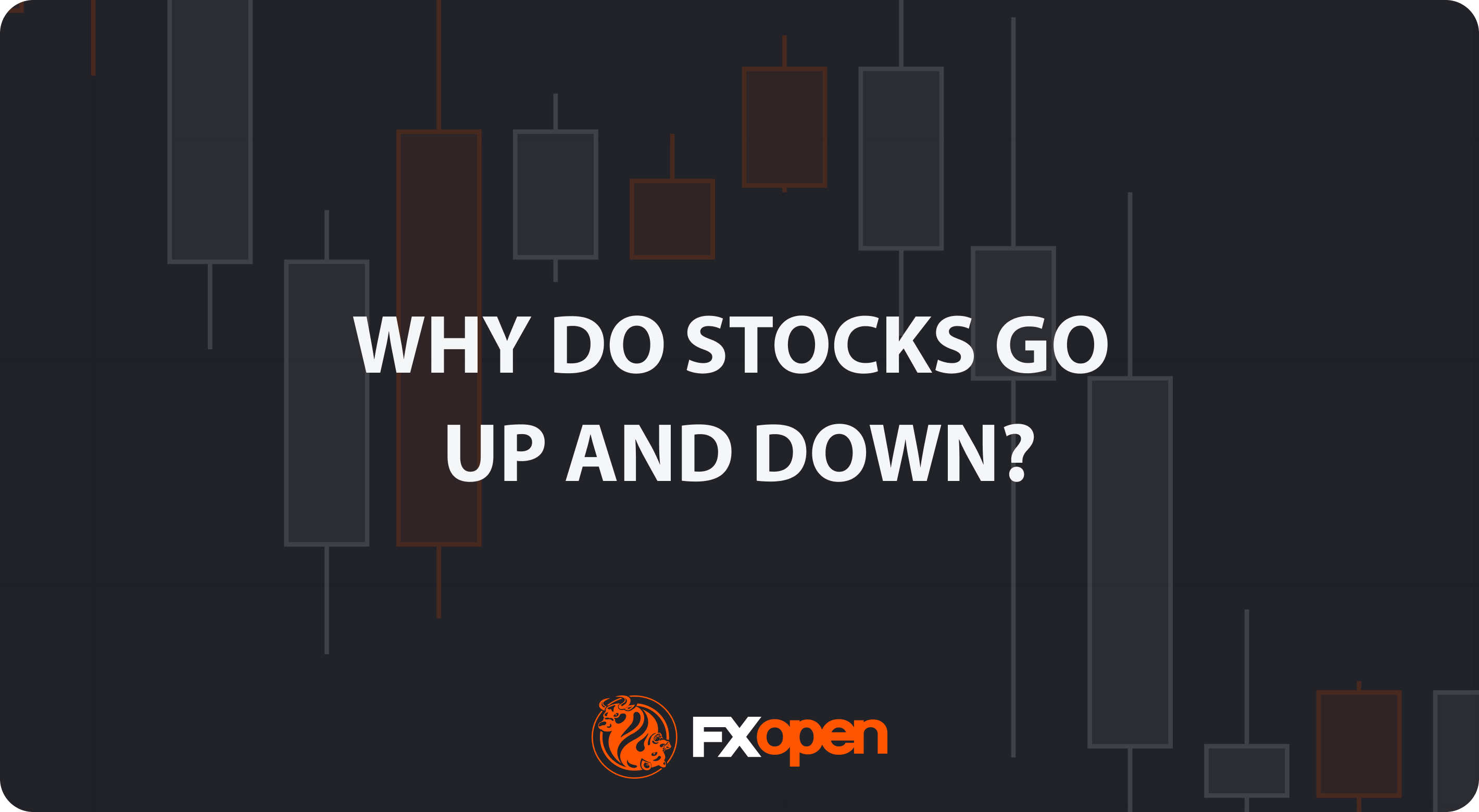FXOpen

Investment risks are a critical topic for consideration. They arise due to various factors, such as market fluctuations, economic conditions, industry-specific challenges, regulatory changes, and unforeseen events. In this FXOpen article, we will delve deep into what investment risk management is and explore how to mitigate the negative effects for your trades.
Understanding Investment Risks
The danger of investment risks is the potential loss of capital or financial harm that traders may experience. Understanding risks is crucial for building a successful experience.
Market Risk
Market risk, also known as systematic risk, is the risk associated with the overall movements of the market. Economic data releases, geopolitical events, interest rate changes, and market sentiment can impact asset prices. Traders cannot control these external factors, making them inherent risks in trading.
Credit Risk
In the context of trading the global market, credit risk refers to the risk that a counterparty in a transaction may not fulfil its financial obligations. This type of investment risk may involve significant sums, and it often takes place through brokers or financial institutions.
Liquidity Risk
Liquidity risk refers to the risk that a trader may not be able to execute a trade promptly and at the desired price due to a lack of market participants willing to transact a particular asset. It's the risk of difficulty to enter the market at a desired price without slippage.
Inflation Risk
Inflation risk in trading refers to the risk associated with changes in countries' inflation rates and how they can impact the value of different assets. In forex, for example, there is a risk that the purchasing power of an asset will decrease due to rising inflation, which can lead to changes in exchange rates.
Political and Regulatory Risks
Regulatory risk is the risk of adverse changes in laws, regulations, or compliance requirements that can affect investments. Political risks are associated with the internal and external policy of a country and its impact on domestic assets.
Currency Risk
Currency risk occurs when investments are made in foreign currencies. Fluctuations in exchange rates can impact the returns of particular investments.
Investment Risk Management Strategies
For effective investment portfolio risk management, traders can employ various strategies, including:
Risk Assessment and Research
Traders conduct thorough research and analysis before making an investment. Understanding the fundamentals and the technical side of an asset can help traders make more informed decisions while being aware of the associated risks.
Risk-Adjusted Position Sizing
Traders and investors can manage risk by determining the appropriate size of each investment based on their risk tolerance and the potential risk-reward ratio. By allocating a specific portion of their capital to each trade relative to the perceived risk, traders can help protect their overall portfolio from excessive losses.
Portfolio Diversification
Portfolio diversification is a risk management strategy that spreads investments across various assets, asset classes, and sectors to reduce exposure to a single investment risk. The most common diversification types are:
Asset Allocation
The basic concept of diversification is to spread investments across different types of assets so that if one asset performs poorly, the losses can be offset by gains in other assets. This helps to reduce the overall portfolio risk, as different assets are exposed to different risks and market forces. With FXOpen's TickTrader platform, you can try out over 600 markets.
Sector Diversification
Within a portfolio, traders can diversify by investing in various sectors of the economy, such as technology, healthcare, finance, and consumer goods. This approach reduces the risk of sector-specific economic downturns affecting your entire portfolio.
Geographic Diversification
Geographical diversification implies investing in assets from different geographic regions or countries. Different regions may experience varying economic cycles and geopolitical events, so geographic diversification can help mitigate risks associated with a particular country or region.
Riskless Assets
Riskless assets are financial instruments considered to have minimal to no risk of default or loss of principal. They are typically characterised by a high degree of safety and are used as benchmarks for assessing other investments' relative risk and return. The primary characteristic of riskless securities is the certainty of receiving the promised principal and interest payments.
Some common examples of riskless securities include:
- US Treasury securities include Treasury bills (T-bills), Treasury notes, and Treasury bonds. They are backed by the credit of the U.S. government, and the risk of default is considered virtually nonexistent.
- Certificates of deposit (CDs) are time deposits offered by banks with fixed terms and interest rates. In the United States, they are insured by the Federal Deposit Insurance Corporation (FDIC) up to a certain limit (typically $250,000 per depositor per bank).
- Government savings bonds are backed by the issuing government, making them relatively low-risk. They may offer fixed interest rates or inflation-adjusted returns.
- Money market funds invest in very short-term, high-quality debt securities like Treasury bills and commercial paper. They are considered low-risk due to their conservative portfolio.
Risky Asset
Risky securities are financial instruments that carry a high risk level. These securities have a greater potential for loss of principal or volatility in returns. Traders typically seek risky securities in pursuit of higher potential returns.
Here are some examples of risky securities:
- Common stocks represent ownership in a company, and their value can fluctuate significantly based on the company's financial performance, market sentiment, and economic conditions. Common stocks have the potential for high returns but risk losing value, including a total loss, if the company goes bankrupt.
- Preferred stocks offer regular dividend payments but do not typically provide voting rights. While they are generally less volatile than common stocks, they still carry risk, especially in the event of dividend cuts or a company's financial distress.
- Corporate bonds represent debt instruments that corporations issue as a means of raising funds. They carry credit risk, which is the risk of default by the issuer. Bonds with lower credit ratings (junk bonds) have higher yields but are riskier.
- Equity mutual funds invest primarily in stocks and can offer diversification but are subject to market volatility. The returns of equity mutual funds depend on the performance of the underlying stocks.
- Commodities can be risky due to price volatility, supply and demand fluctuations, geopolitical factors, and exchange rates.
CFD Trading
CFD trading is a method that can be used to lower investment risks. CFD (Contract for Difference) trading is a financial derivative trading method that enables traders to speculate on the price movements of various underlying assets, like stocks, indices, commodities, and currencies, without owning the underlying assets. Traders enter into contracts with brokers, profiting from price changes regardless of their direction, often using leverage to magnify trading capital.
To diversify your portfolio, you can consider trading various financial instruments, including currencies, cryptocurrencies*, commodities, and stocks, with FXOpen. Consider opening an FXOpen account to carve out your trading niche today.
Conclusion
Managing investment risks is a crucial aspect. It’s vital to deeply understand the market and be aware of the risks involved. Diversifying your portfolio, trading riskless assets, and monitoring economic indicators are just a few strategies to help you manage risk.
*At FXOpen UK and FXOpen AU, Cryptocurrency CFDs are only available for trading by those clients categorised as Professional clients under FCA Rules and Professional clients under ASIC Rules, respectively. They are not available for trading by Retail clients.
This article represents the opinion of the Companies operating under the FXOpen brand only. It is not to be construed as an offer, solicitation, or recommendation with respect to products and services provided by the Companies operating under the FXOpen brand, nor is it to be considered financial advice.
Stay ahead of the market!
Subscribe now to our mailing list and receive the latest market news and insights delivered directly to your inbox.








